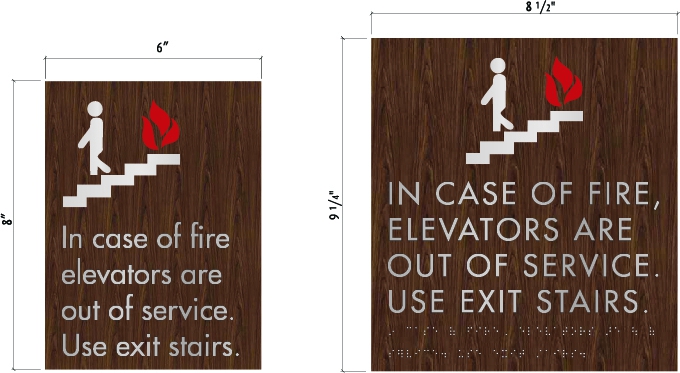Evolving Sign Codes
Mon, 23 Jan 2017
It’s become the "new normal" that sign codes are ever-changing and ever-evolving. Especially when it comes to those related to fire (life safety) code. In recent years the International Building Code (IBC) was widely implemented and essentially the standard rule. All stairwell signs were to follow the same set of requirements with only a rare deviation. Not today.
In 2016 we saw many instances where local authorities had just implemented new sign code requirements that took the current IBC regulations and expanded them. The most common change we’ve seen is the addition of tactile and Braille where it previously was not required.
This change impacts the cost of a project as tactile and Braille must be applied to a sign design following the Americans with Disabilities Act (ADA) guidelines, which therefore also requires a change in construction and usually a larger sign.

When it comes to the stairwell sign, the changes we have seen from local authorities are inconsistent. One project required the entire sign face be tactile and Braille, while another project only wanted the current floor level number to be tactile and Braille.

To take it one step further, one city is requiring a facility to have a tactile and Braille room number posted on every door along public access corridors.
Being proactive is the key. Seek input from your local code inspector before a project is approved for production. Their review of the sign drawings will ensure a smooth certificate of occupancy process and avoid unnecessary delays, potential sign remakes, and additional costs. Contact Latitude about how to create compliant signage.
Like what you see?
Get more ideas, design, and inspiration delivered to your inbox on a monthly basis. Sign up for our email, we won’t waste your time!